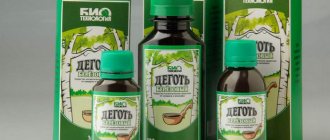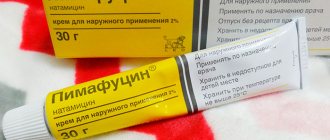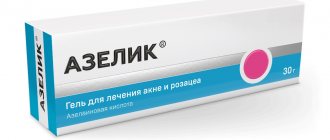Home » Health » Hellebore water for lice, fleas and nits: instructions for use
Everyone has heard about hellebore tincture. A couple of decades ago it was used to treat head lice. This disease often occurs in childhood, when playing with dirt causes lice to form on the scalp.
The disease is very contagious : if you use the comb of a sick person, there is a 95% chance that the person will become infected.
Often, the disease spreads among children at school and kindergarten. Fortunately, the treatment is not complicated: just use hellebore water.
Instructions for using hellebore water for lice.
| № | Actions | Result |
| 1 | Before the procedure, you should wash your hair with shampoo and dry your hair. If less than a day has passed since the last time you washed your hair, you don’t have to do this. | So hellebore water will not mix with the fat secreted by the hair, its effect will be effective |
| 2 | Shake the bottle before use | This is necessary so that the concentration of substances is distributed throughout the composition in equal proportions |
| 3 | Apply hellebore water to the scalp with a cotton pad. You should process the curls along the length so as not to leave “animals” on the ends of the hair | It is important to distribute the composition throughout the hair as much as possible. The back of the head and sides should be treated especially carefully. |
| 4 | Leave for half an hour | During this time, the liquid will kill the lice |
| 5 | Rinse your hair under running water. Use shampoo | It is important not to leave traces of the product on the scalp and hair |
| 6 | The substance is poisonous. When applied, it could end up under nails or on clothes. You should shower and wash your hands thoroughly | If it gets into food, the substance will cause serious poisoning. It's better to be safe: wash your hands and body, change clothes |
Important ! After the first procedure, nits may remain alive. You should use a special comb to comb them out of your hair. For greater effectiveness, repeat the procedure after 7-10 days. During this time, you should check your hair for lice and nits.
Pharmacodynamics and pharmacokinetics
Hellebore water is used as an anti-pediculosis (anti-parasitic) agent. The drug has a pronounced neurotoxic effect against adult lice .
The pharmacological properties of the solution are determined by the properties of hellebore, a poisonous herbaceous perennial from the lily family, which is included in its composition as an active ingredient.
All parts of hellebore contain alkaloids from the cyclopentaneperhydrophenanthrene and glycoalkaloids (steroidal alkaloids), which are natural compounds that combine the basic properties of alkaloids and steroidal saponins .
So, in grass they contain approximately 0.55, in rhizomes - up to 1.3, and in roots - up to 2.4%. From the roots and rhizomes the alkaloid yervin (amino alcohol) and the lycoalkaloid pseudoyervin (chloroform) are isolated.
Moreover, in the summer, the concentration of alkaloids in the plant decreases sharply, and in the spring it increases, therefore, it is in the spring months that hellebore is considered the most poisonous.
The main structural element of all alkaloids are alkalines (amino alcohols or amino alcohols), which are secondary and tertiary bases containing a piperidine ring .
In medical practice, hellebore preparations are used as an effective remedy against ectoparasites , that is, parasites that live on the surface of the body and external organs.
Used as an external remedy, hellebore solution has a pronounced anti-scab effect . In veterinary practice, a decoction prepared from the roots and rhizomes of hellebore is prescribed as a digestive aid and also as an emetic.
Experiments have shown that the complex of ordinary alkaloids also helps to reduce blood pressure while simultaneously increasing the amplitude of heart contractions , provokes irritation of the endings of sensory nerves , causes severe sneezing and coughing attacks .
When taken orally, it causes vomiting . In foreign countries, alkaloids isolated from hellebore are used as an antihypertensive agent .
protoveratrine, which is part of the plant, has a long-term hypotensive effect : the substance reduces systolic and diastolic pressure , provokes bradycardia , dilation of the lumen of blood vessels, and reduces the minute volume of blood flow.
In addition, it reduces diuresis a hypothermic effect to some extent . However, the breadth of therapeutic action of protoveratrine is small, so the best effect from its use is observed in the initial (I-II) stages of hypertension . It is also sometimes used for eclampsia and preeclampsia .
Veratramine, which is part of hellebore, reduces blood pressure and heart rate , has a blocking effect on the pressoreceptors of the carotid sinus , and reduces the excitability of the vasomotor center .
Germitrin and neogermitrin have a stimulating effect on vascular baroreceptors (sensitive nerve endings in blood vessels that sense changes in blood pressure and reflexively regulate its level) and, unlike protoveratrine , on the contrary, increase the excitability of the vasomotor center .
Widespread use alkaloids is difficult due to their high toxicity .
Preparations in which the plant acts as an active substance are used exclusively as an external agent. They are effective as an antifungal , irritant and analgesic .
The use of hellebore significantly increases the tone of skeletal muscles, dilates the vessels of the circulatory system , and excites the nervous system .
Its drugs are used for pain syndromes that accompany neuralgia , myositis , arthritis , gout , rheumatism and various types of musculoskeletal diseases .
The alcohol solution is used externally, rubbing into the scalp, for dandruff and for hair growth . The use of hellebore water against lice : the product has a detrimental effect on the condition of the smooth muscles of the intestinal tract of parasites and their reproductive system, as a result of which they lose the ability to feed and reproduce.
In folk medicine, the drug is also used to combat alcohol addiction .
As a remedy against alcoholism, hellebore water is consumed orally (despite the prohibition of this method of use in the instructions and the disapproval of official medicine).
The mechanism of action of the drug is based on the ability of hellebore to provoke severe intoxication of the body when taken orally. The tincture is mixed into an alcoholic drink without the patient’s knowledge, resulting in the person being poisoned.
alkaloids ( protoveratrine , nervin, etc.) first have a stimulating effect on the central nervous system , and then block it, which is manifested by the following symptoms:
- severe vomiting;
- diarrhea;
- general excitement of the body;
- deterioration of general health;
- a steady increase in muscle tone, which is replaced by spasms;
- acute heart failure.
In almost 100% of cases, the patient requires hospitalization and medical care. This method of using hellebore water assumes that after the experience, the alcoholic, believing that the cause of everything is alcohol poisoning, will forever feel disgusted with it.
However, this treatment of alcoholism causes skepticism and rejection among doctors. Firstly, the human body may not be able to cope with the load, and everything will end in death .
This is due to the fact that the protoveratrine has an extremely adverse effect on the digestive and circulatory systems , as well as on the brain .
Secondly, reviews of the use of hellebore water for alcoholism indicate that having fully recovered after treatment, the majority of those suffering from alcohol addiction return to their addiction.
the alkaloids contained in hellebore are practically not absorbed and do not have a resorptive effect (or the latter is extremely insignificant).
Prolonged use of hellebore water or excessively active rubbing of the drug into the skin can lead to the penetration of the drug into deep tissues and cause the development of various kinds of resorptive effects (in particular, intoxication of the body ).
When to use
The main area of application is the treatment of pediculosis of the pubis or scalp. Actively used as a preventive measure. Thanks to alkaloids, parasites are paralyzed, which further prevents their reproduction.
In alternative medicine, the tincture is used in the treatment of nail fungus and alcoholism.
In cosmetology, this product is used to strengthen and restore hair, and to remove dandruff.
In medicine it is used as a strong pain reliever for the following diseases:
- radiculitis
- gout
- arthritis
- muscle pathologies
- neuralgia
- for musculoskeletal disorders
When studying hellebore, it was discovered that the poison can calm the nervous system, slow the pulse and lower blood pressure.
The solution is for external use only!
Side effects
In rare cases, hellebore water can provoke the development of local allergic reactions , which manifest themselves as:
- itching;
- burning;
- tingling;
- tingling;
- erythema (redness of the skin) at the site of application of the drug.
In case of accidental ingestion of the drug, symptoms of poisoning may occur:
- nausea;
- diarrhea;
- dry mouth;
- thirst;
- severe headaches;
- pain in the epigastric region.
In particularly severe situations, disturbances in the rhythm and frequency of contractions of the heart muscle , which are often accompanied by a slowing of the pulse . Sometimes the nervous system , as evidenced by:
- convulsions;
- increased arousal;
- visual disturbances;
- loss of consciousness.
Often the only signs of intoxication with hellebore alkaloids are dyspeptic disorders and a sharp slowing of the pulse with a drop in blood pressure (which is caused by stimulation of the vagus nerve ).
Instructions for Hellebore Water: how to use and dosage regimen
As a remedy for lice, hellebore water is used as an external remedy. Before use, shake the bottle with the drug vigorously, after which, after wearing rubber gloves, the solution is applied to damp hair in the amount necessary to wet the hair and skin underneath.
To maximize the effect, the instructions recommend applying hellebore water evenly over the entire surface of the head, not forgetting to treat areas located in the back of the head and behind the ears.
The head is tied with a scarf and the drug is left on the hair for approximately twenty minutes or half an hour. Then the hair is thoroughly washed with shampoo under warm running water and combed well with a fine-toothed comb in order to remove insects killed as a result of the treatment.
Repeated treatment of the head is allowed at intervals of 24 hours. In case of secondary infection with parasites, the procedure is repeated no earlier than seven to ten days later.
lice and nits treatment is the effect on the hair. After using the drug, their condition improves significantly, the hair becomes more manageable, shiny and silky.
The condition of the scalp also improves:
- its fat content is normalized;
- pathogenic microorganisms are destroyed (including fungi that cause dandruff );
- the tone of the blood vessels increases ;
- the hair follicles improves (as a result of this, the hair follicles are much better supplied with oxygen and essential microelements ).
Application for hair growth involves applying hellebore water to the hair approximately once a week. If you have a receding hairline, as well as people who have alopecia as a result of radiation therapy , it is allowed to wipe the hairless areas of the scalp every other day.
The drug is applied using sponges, tampons or cotton wool discs, brushes, brushes. Some people take hellebore water into a medical syringe, distribute it evenly over the partings and then comb their hair.
It is also possible to simply take a plastic bottle with holes in the cork and thus apply the product to the hair roots.
People suffering from alcohol addiction and their relatives also know what hellebore water is. Ingestion of the drug along with a portion of alcohol can provoke symptoms of intoxication in the body, for which the alcoholic will most likely blame the alcoholic drink.
After providing him with medical care and restoring the body, a persistent aversion to alcohol may be noted. However, such “treatment” is quite dangerous, since it often leads to serious consequences for a person’s health and can even cause his death.
If, however, other methods turned out to be ineffective, and the use of hellebore is considered as the only panacea, then it should be remembered that pharmaceutical hellebore water is not used for alcoholism due to the high risk of developing adverse reactions. Instead, traditional medicine advises preparing a decoction from the root of the plant. But when using it for alcoholism , the dosage must be observed extremely strictly.
The recipe for a decoction of hellebore roots and rhizomes is as follows: 1 teaspoon of raw material (dry crushed roots of the plant) is poured with 50 grams of boiling water and left for one hour, then strained through a piece of gauze and put in a cool place.
The resulting decoction can be stored for no more than five days. They use it by adding two drops (no more!) with a pipette three times a day to food and drinks (not alcoholic).
On days when the patient does not drink alcohol, the decoction is not added to food in order to properly develop the emetic and laxative effects . If the expected therapeutic effect from the use of the drug is not observed, the dosage is gradually increased by one drop per day (but not more than fifteen drops).
If even high doses are ineffective, you should stop treatment and seek help from a specialist.
Contraindications
There are no exact contraindications to the use of the drug. But among the factors that make taking medication difficult are everything that increases the body’s sensitivity to allergens:
- hormonal imbalances;
- age up to 2.5 years;
- predisposition to allergies;
- temporary diathesis;
- recent contact with allergens;
- hypersensitivity of the body.
It is not recommended to use the drug in patients with open head wounds. If the substance enters the bloodstream, it can cause severe itching, inflammation and peeling of the skin.
For dermatitis and other skin disorders, taking the drug is also not recommended. A toxic substance can enhance the effect of the disorder, leading to even more serious peeling of the skin and redness.
If the patient is constantly in contact with water (visits a swimming pool, etc.), contact with it will need to be temporarily abandoned. Firstly, pediculosis can be transmitted in this way. Secondly, residues of the substance can get into the water and cause poisoning in other pool visitors. Thirdly, chlorine, which is added to purify the liquid, can cause negative side reactions after using hellebore water.
The above contraindications mainly apply to those who use the drug to treat head lice. Contraindications for use against fungus:
- inflammatory skin process;
- open wounds on the surface of the epidermis;
- severe itching and redness due to fungus;
- skin hypersensitivity.
If hellebore water is used against dandruff, you need to ensure that skin peeling does not increase after using the drug. If you notice that the exfoliation of skin particles has not stopped, but has intensified, stop taking the medication - such a reaction may indicate the initial stage of dermatitis.
Overdose
Hellebore is a very toxic plant. Enteral administration of it in an amount equal to 1 gram leads to death.
With prolonged treatment, as well as when the doses recommended by the instructions are systematically exceeded, the alkaloids can provoke the development of resorptive effects , which manifest themselves in the form of:
- nausea;
- severe vomiting;
- a sharp decrease in blood pressure ;
- pronounced, which is accompanied by a sharp increase in the amount of secreted saliva and sweat, loose stools , constriction of the pupils , slowing of the pulse rate , a drop in blood pressure , asthmatic breathing ;
- inhibition of cardiac muscle .
of a large amount of alkaloids into the systemic circulation can provoke cardiac arrest . For this reason, oral use of the drug is unacceptable.
To provide first aid in case of accidental ingestion of hellebore water, the victim is prescribed:
- gastric lavage with tannin , which are characterized by their tanning properties;
- oral administration of a suspension of activated carbon or white clay ;
- taking carminative medications ;
- saline laxatives;
- irrigation with a two percent solution of novocaine (if the mucous membranes are affected).
The treatment is specific. anticholinergic drugs (0.1% atropine ), drugs that improve the function of the heart and vascular system , as well as drugs that normalize the function of the gastrointestinal tract .
special instructions
The drug can only be applied to intact skin.
Due to the high probability of a resorptive effect , when using it, avoid contact with the eyes, mucous membranes, wounds, burns or irritated surfaces, as well as in the mouth (if it enters the stomach and bloodstream the drug acts as a strong poison ).
After applying hellebore water, hands should be washed thoroughly with soap.
For preventive purposes, in order to avoid re-infection with parasites , clothing, bedding and underwear should be disinfected simultaneously with treatment.
Precautionary measures
Doctors recommend observing the following safety measures:
- The room in which the treatment will take place should be ventilated. When treating lice, it is best to apply the drug outside.
- You need to protect your respiratory system. To do this, you can wear a face mask or other protective equipment.
- Anyone who comes into contact with hellebore water must wear rubber gloves.
- It is important to ensure that the solution does not get into your eyes, mouth or ears. If penetration occurs in these areas, wash them immediately with water.
- Store in a place protected from children.
- Do not use for internal use.
Following these recommendations can save lives.
Use during pregnancy and lactation
Clinical studies regarding the use of hellebore water by pregnant and lactating women have not been conducted.
For this reason, treatment with the drug to pregnant women only in cases where the benefits to the mother outweigh the potential risks to the unborn child. Treatment is carried out according to strict indications and under the constant supervision of the attending physician.
If it is necessary to prescribe hellebore water to lactating women , then stop breastfeeding for the period of treatment.
Reviews of hellebore water
Reviews of hellebore water for lice indicate that despite its low price, the product is very effective and effectively kills not only adults, but their larvae.
The average rating of the drug on various forums and review sites is 4.5 points on a five-point scale. Perhaps, many consider the only disadvantage of hellebore water to be the side effects that occur after its use, namely, tingling and slight burning at the sites of application.
The advantages include:
- cheapness of the product;
- high efficiency in the fight against lice (some reviews suggest that hellebore water was often more effective than its more expensive analogues);
- effectiveness in the fight against scabies .
In addition, the drug has established itself as an inexpensive and reliable means for hair growth and strengthening. By irritating the scalp, hellebore water increases vascular tone , thereby stimulating blood flow and improving the processes of nutrition of hair follicles and supplying them with sufficient oxygen.
As a remedy for alcoholism , hellebore water has received rather mixed reviews. Some people note its effectiveness, however, most medical professionals agree that the risks to the patient outweigh the possible benefits of treatment.
For this reason, before using the drug, you should carefully weigh the pros and cons, and also consult with a specialist.
Features of the drug
If you read the instructions for the drug, you will see that hellebore tincture has a wide range of applications:
- Eliminates the consequences of bites of blood-sucking insects.
- Eliminates the symptoms of many skin ailments, especially those caused by insect bites.
The product has a complex composition and is classified as a toxic substance. When using it, you must strictly follow the dosages indicated in the instructions or prescribed by your doctor.
If side effects from hellebore occur, use of the drug should be temporarily discontinued. After a short break, you can use hellebore water again. If negative consequences from using the solution arise again, then treatment should be discontinued.
Hellebore tincture is made on the basis of the herb of the same name, from its rhizomes and leaves. After this, ethyl alcohol is added to the product. This composition completely retains all the beneficial properties of the hellebore plant.
Price of hellebore water
The drug belongs to the category of affordable medicines: the price of hellebore water in Ukraine varies from 18 to 28 hryvnia. In Russia, you can buy the drug at a price ranging from 9 rubles to 21 rubles.
- Online pharmacies in RussiaRussia
- Online pharmacies in UkraineUkraine
ZdravCity
- Hellebore water solution d/nar.
approx. 100ml No. 1 NOT DEFINED 86 rub. order
Pharmacy Dialogue
- Hellebore water bottle 100ml MFF
74 RUR order
- Hellebore water (bottle 100ml)YaFF
89 rub. order
show more
Pharmacy24
- Hellebore water 100 ml solution PAT "Khimpharmzavod" Chervona Zirka", Kharkov, Ukraine
29 UAH. order
Price
The popularity of hellebore water against lice and nits is due not only to the high effectiveness of the drug, but also to its low price. A 100 ml bottle of medicinal solution costs 25–35 rubles on average in Russia.
This volume is enough to treat the head 2–4 times, depending on the length of the hair. Therefore, the cost of the entire course of treatment for pediculosis with hellebore water does not exceed 35 rubles. With a mild form of infection, one bottle will be enough for preventive treatment of 3-4 people against lice and nits.











